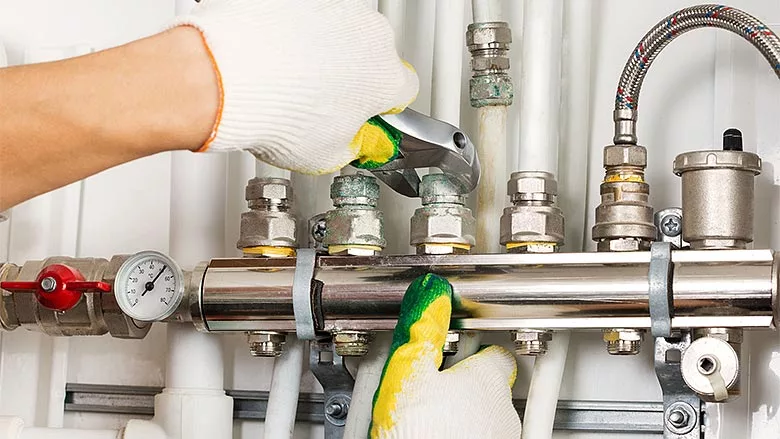HYDRONICS WORKSHOP
John Siegenthaler: Not where I live
Becoming a true hydronics professional is an ongoing process.

For many years, I’ve been offering a free demo version of the “Hydronics Design Studio” software that I co-developed with my long-time colleague, Mario Restive. It’s there for the taking at www.hydronicpros.com.
We usually get several “takers” on this offer every week.
The website uses a typical procedure for getting the contact information of the person downloading the demo software. One of the questions we ask in this process is: “What are your needs?”
We get plenty of short responses to this question, such as “design,” “drawings” or “for a class project.”
One response that recently arrived went into far more detail, and it didn’t paint a pretty picture. Here it is — verbatim.
“After a complete system failure (system designed and installed by a professional heating contractor at a cost over $18,000) and a quote of over $25,000 to do it over, I have no confidence in any of the installers in my area. I have purchased both books and I have a good understanding now, but rather than do all my calculations and layout on paper, I want to have the use of these tools to explore the various options before I commit to my design.”
Ouch! As someone who’s been promoting the virtues of hydronic heating for more than 40 years, it’s disheartening to learn of another case of complete dissatisfaction with at least two contractors that supposedly represent “professionalism” with regard to hydronics technology.
If you don’t have confidence in what you’re designing or installing, you need to “pause” and get back to the unchanging fundamentals.
Not an isolated incident
It’s reasonable to expect that any contractor, in just about any field, and over years of work will have a small share of customers that just aren’t happy with the work that they’ve been hired to do. I’m a realist, it happens, and it’s part of running a business.
I only wish I didn’t have to use the word another a couple of paragraphs ago when mentioning this need expressed by a homeowner.
Many times, I’ve been in a conversation with someone who wants to install a high-quality hydronic system, has the funds to pay for it, but tells me something to the effect: “John, you have to understand, where I live, there just aren’t any competent installers who know what they’re doing when it comes to designing or installing a proper hydronic system.”
Over the years, that sentiment has been expressed to me by doctors, teachers, engineers, builders, computer programmers and plenty of other frustrated homeowners from all walks of life.
These people aren’t living in some arctic outpost, or the Florida Keys, where you might expect minimal availability of hydronic professionals. They’re living in places where hydronic heating has been used for a long time. Places where product availability should not be an issue. Places where there are plenty fuel options, and plenty of demand for all kinds of HVAC systems.
My software partner Mario, who’s a super talented engineer and a very practical guy, once lent his observation to this situation. He called the approach that some installers take “black magic.” The concept that the installer relies on the benevolence of the hydronic gods as a prerequisite for a successful installation. When it’s all assembled, they close their eyes, hold their breath, flip the power switch on and hope — just hope — that the system comes to life with a cooperative attitude.
Can you imagine if other $20,000-plus purchases homeowners make had this “maybe it will work” stigma attached to them?
It doesn’t have to be this way. If you don’t have confidence in what you’re designing or installing, you need to “pause” and get back to the unchanging fundamentals. You need to know how to perform a proper heating load estimate, size a circulator, select adequate heat emitters, protect a conventional boiler from flue gas condensation, get air out of the system, install safe venting, program the controls and understand what those aluminum plates that hold PEX tubing to the underside of floor are there for.
The list goes on.
Stick to the fundamentals
Don’t reinvent the hydronic “wheel” with each new system. Sure there will be differences with each system, but the physics never changes. Think you can sidestep thermodynamics, make water flow only where the arrows on your sketches point, or push 20 gpm through a valve with a Cv of 2.5? If so, I suggest that you sell your tools and look for a career in politics, where aspiration trumps achievement.
If you’re willing to invest in becoming a hydronics professional, realize at the onset that it’s an ongoing process. There’s always something to learn that will improve what you do. Fortunately, there have never been more resources from which to learn, many of them freely available, starting right here at www.pmmag.com.
Take pride in developing your skills and what you create. Polish it up when you’re done. Stand there and admire it. Sign your name somewhere on every system in hopes that someday it will be recognized (and admired) by the techs who follow.
If you’re just in it for a paycheck, you’re in the wrong field. You’re going to be frustrated, and your customers aren’t going to be satisfied. When systems that go for five figures don’t work, expect to find yourself in court, spending time and money that could otherwise add value, create admiration and grow your company.
I plan to contact that fellow who left that previously stated “need” on our website. Chances are, as a homeowner, he’s probably not going to buy our software, but maybe there’s a way to restore some confidence that hydronic heating can actually work well. Maybe there’s a way to help him find a true hydronics professional — even where he lives.
Looking for a reprint of this article?
From high-res PDFs to custom plaques, order your copy today!






